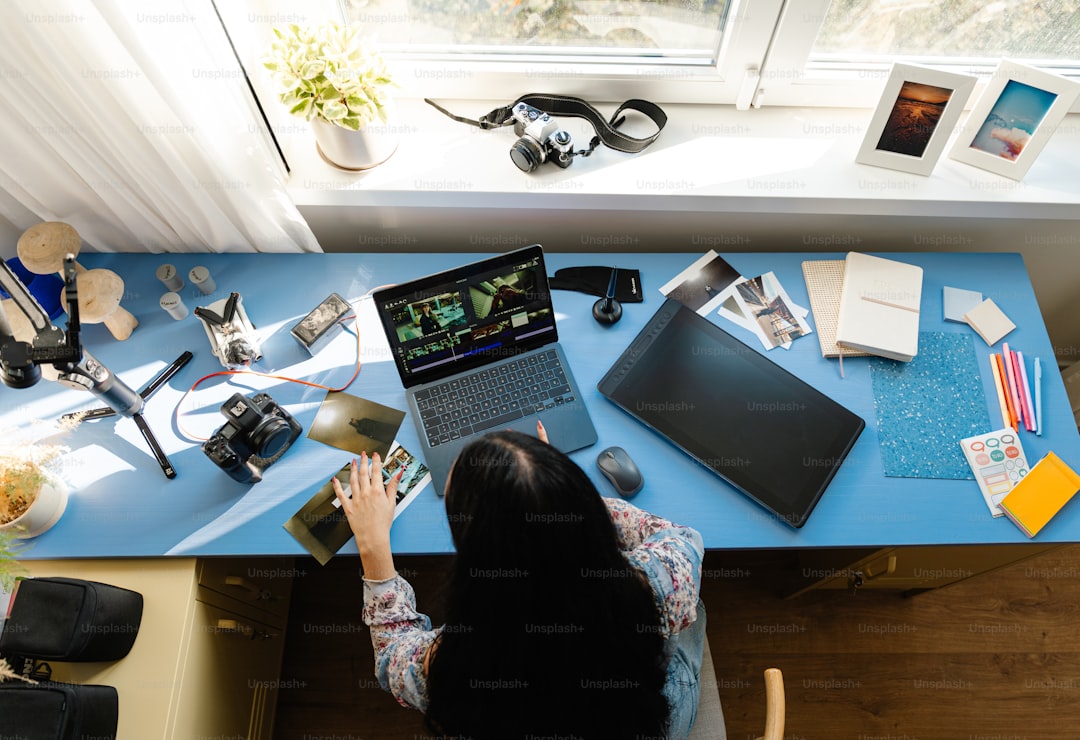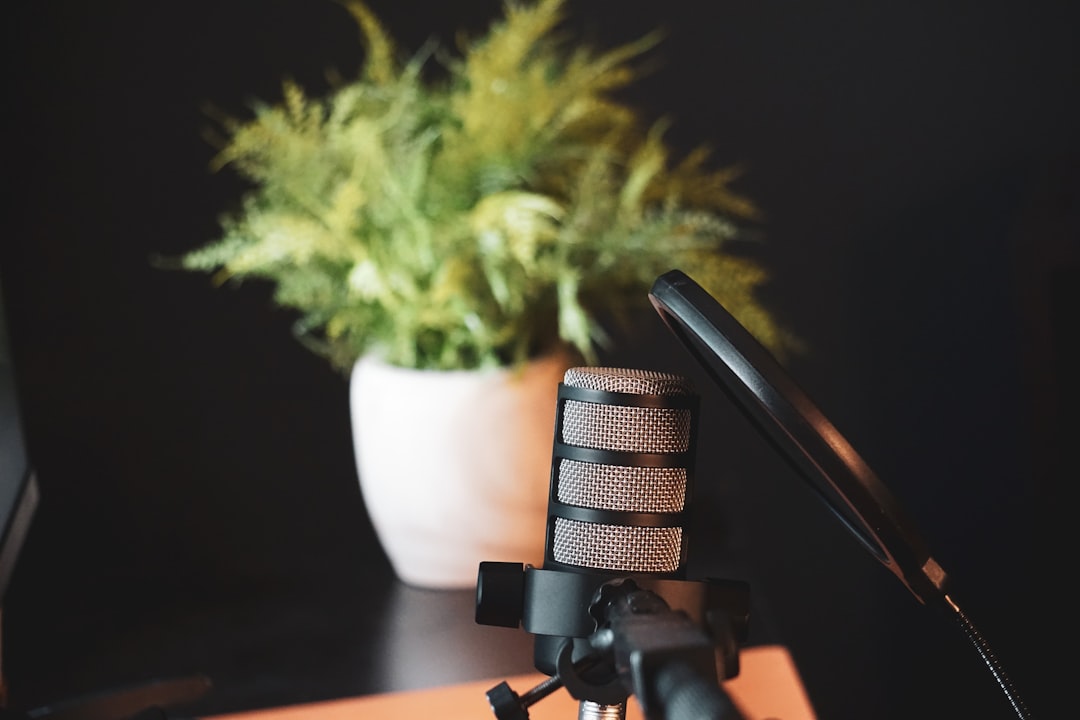Building a Supportive Nomad Community for Better Wellbeing

Introduction
The digital nomad lifestyle promises freedom, adventure and the chance to work from any corner of the globe. Yet the same mobility that fuels excitement can also create gaps in social support, routine and health awareness. When you are constantly moving, it is easy to feel isolated, to miss out on reliable nutrition advice, or to neglect mental resilience. Building a supportive nomad community is not a luxury – it is a practical strategy for safeguarding wellbeing while you chase new horizons.
In this article we explore the core elements of a thriving nomad network, how to cultivate connections both online and offline, and how shared knowledge about food, movement and mental health can become the backbone of a healthier, more balanced nomadic life.
Why Community Matters for Nomads
Shared Experience Reduces Loneliness
Living abroad often means leaving behind family, friends and familiar cultural cues. Even when you meet other travelers, the fleeting nature of short‑term stays can make relationships feel superficial. A community that meets regularly, whether through a co‑working space or a virtual forum, provides a stable reference point. Knowing that there are people who understand the challenges of unreliable internet, time‑zone juggling and visa uncertainty lowers the psychological stress that comes from feeling alone.
Collective Knowledge Accelerates Learning
Every destination brings its own food market, health regulations, and fitness facilities. One nomad may have discovered a low‑cost vegetarian grocery store in Chiang Mai, while another knows the best way to stay hydrated on a desert trek in Morocco. When information is pooled, each member saves time, avoids costly mistakes and gains access to a richer set of resources than they could find on their own.
Accountability Improves Habits
Health and wellbeing goals—such as maintaining a balanced diet, exercising regularly or practicing mindfulness—are easier to keep when you have peers who check in on your progress. A community can set up weekly challenges, share meal plans or organise group workouts. The social pressure to stay consistent becomes a positive force, turning intention into action.
The Pillars of a Supportive Nomad Community
Trust and Safety
People must feel that the community is a safe space for honest conversation. Clear guidelines about respectful communication, privacy and conflict resolution lay the groundwork for trust. When members know that their personal health information will not be disclosed without consent, they are more likely to share challenges and successes.
Inclusivity
Nomad communities thrive when they welcome diverse backgrounds, skill levels, dietary preferences and mobility patterns. An inclusive environment encourages participation from solo travelers, couples, families and remote workers of all ages. This diversity brings varied perspectives on nutrition, fitness and mental health, enriching the collective knowledge base.
Accessibility
The community should be reachable through multiple channels—messaging apps, forums, local meet‑ups and co‑working spaces. Not every nomad has reliable internet at all times, so having offline options like printed bulletins in hostels or community boards in cafés ensures that no one is left out.
Purpose‑Driven Activities
A community that simply chats about travel stories can be enjoyable, but a purpose‑driven group focuses on wellbeing outcomes. Regularly scheduled activities such as cooking workshops, guided hikes, yoga sessions, and health webinars give members concrete reasons to engage and practice healthy habits together.
Building Connections Online
Choose the Right Platforms
- Messaging Groups – Apps like Telegram, Slack or Discord allow real‑time conversation, file sharing and quick polls. Create separate channels for topics such as “Meal Prep Ideas”, “Local Gyms” and “Mindful Moments”.
- Forums and Knowledge Bases – Platforms like Reddit or dedicated community websites enable longer‑form posts, searchable archives and structured Q&A. Tagging systems help members locate nutrition advice for specific regions.
- Social Media Communities – Facebook groups or Instagram hashtags can attract newcomers and showcase community events. Use these channels to highlight success stories and upcoming meet‑ups.
Set Clear Community Guidelines
Draft a concise set of rules that cover respectful language, confidentiality of health information, and expectations for self‑promotion. Pin the guidelines to the top of each channel and ask new members to acknowledge them before gaining full access.
Facilitate Regular Virtual Events
- Weekly Check‑Ins – Host a short video call where members share their current health goals, challenges and wins. A rotating facilitator can keep the conversation fresh.
- Expert Sessions – Invite nutritionists, personal trainers or mental health professionals to give live talks. Record the sessions for members who cannot attend in real time.
- Cooking Demonstrations – Stream a live cooking session where a member prepares a local dish using globally available ingredients. Encourage participants to follow along and ask questions.
Encourage Peer‑Led Initiatives
Give members the autonomy to start sub‑groups based on shared interests—such as vegan travelers, runners, or meditation enthusiasts. Provide a simple template for creating event pages and a calendar where all activities are listed in one place.
Transitioning to Offline Interaction
Finding or Creating Local Hubs
- Co‑Working Spaces – Many cities have co‑working venues that already host a nomad clientele. Negotiate a partnership where the space offers a dedicated “wellbeing corner” equipped with a water dispenser, healthy snacks and a bulletin board for community announcements.
- Cafés with Community Boards – Approach café owners to display a printed schedule of upcoming meet‑ups. Offer to supply a small supply of fresh fruit or herbal tea in exchange for the board space.
- Hostel Partnerships – Hostels often have common rooms that can be used for group activities. Propose a weekly “wellbeing night” where travelers can share tips on nutrition, exercise and mental health.
Organising Low‑Barrier Meet‑Ups
Start with informal gatherings that do not require extensive planning. Examples include:
- Morning Walks – Meet at a central park for a 30‑minute walk, followed by a quick discussion on hydration strategies for the day.
- Potluck Dinners – Invite members to bring a dish that reflects local ingredients but meets a specific dietary goal (high protein, low sugar, gluten‑free). Use the meal as a chance to exchange recipes.
- Fitness Sessions – Arrange a group yoga class in a public space, or a bodyweight workout in a hotel lobby. Keep the equipment minimal to ensure accessibility.
Maintaining Momentum
After each offline event, capture photos, notes and key takeaways, then share them in the online channels. This reinforces the experience for attendees and sparks interest among those who missed the gathering. Encourage participants to volunteer as hosts for the next session, rotating responsibilities to prevent burnout.
Nutrition Strategies for the Road
Understanding Local Food Systems
Every country has its own staple foods, market rhythms and seasonal produce. Spend the first few days in a new location scouting the nearest grocery stores, farmer’s markets and street vendors. Ask locals about:
- Which fruits and vegetables are in season
- Where to find affordable protein sources
- Typical cooking methods that preserve nutrients
Document these findings in a shared spreadsheet that community members can reference when planning meals.
Building a Portable Kitchen
A minimal set of tools can dramatically expand your cooking options:
- A compact, non‑stick skillet
- A collapsible silicone pot
- A reusable water bottle with a built‑in filter
- A set of basic spices (salt, pepper, dried herbs)
With these items, you can transform a local market purchase into a balanced meal without relying on expensive restaurants.
Sample Meal Planning Framework
- Protein – Choose from beans, lentils, canned fish, tofu, eggs or locally sourced meat. Aim for 20‑30 grams per main meal.
- Complex Carbohydrates – Opt for whole grains such as brown rice, quinoa, bulgur or whole‑wheat bread. Portion size should fill about a quarter of your plate.
- Vegetables – Fill half the plate with colorful vegetables, preferably raw or lightly steamed to retain vitamins.
- Healthy Fats – Add a drizzle of olive oil, a handful of nuts or avocado slices. Keep total fat intake to about a tablespoon per meal.
Encourage community members to post their own variations of this framework, highlighting regional twists that keep meals interesting.
Managing Food Safety on the Move
- Cold Storage – When staying in hostels, ask if a mini‑fridge is available. If not, use insulated bags with ice packs for short‑term storage.
- Water Purification – In places with uncertain tap water quality, rely on filtered bottles or boil water for at least one minute before consumption.
- Safe Street Food – Look for stalls with high turnover, fresh cooking surfaces and clear hygiene practices. Ask locals which vendors are reputable.
Overcoming Common Nutritional Challenges
- Limited Access to Fresh Produce – When fresh options are scarce, supplement with dried fruits, canned vegetables (rinse to reduce sodium) and vitamin C tablets.
- High Carb Heavy Diets – Counterbalance by incorporating more protein and fiber through legumes, nuts and seeds.
- Eating Out Frequently – Choose dishes that include vegetables and lean protein, request sauces on the side, and control portion sizes by sharing meals.
Physical Activity in a Nomadic Lifestyle
Leveraging the Environment
- Urban Settings – Use staircases, public parks and bike‑share programs for cardio. Many cities have free outdoor fitness equipment.
- Coastal Areas – Take advantage of beach walks, swimming and paddleboarding for low‑impact workouts.
- Mountainous Regions – Hiking, trail running and bodyweight circuits on natural surfaces provide strength and endurance training.
Creating a Portable Workout Kit
- Resistance bands (light and medium tension)
- Jump rope
- Yoga mat (foldable)
- A small set of dumbbells (adjustable if possible)
These tools allow you to perform a full‑body routine in a hotel room, hostel common area or even a park.
Structuring Consistent Routines
- Morning Activation – 5‑10 minutes of mobility drills (neck rolls, hip circles, cat‑cow stretches) to wake up the body.
- Mid‑Day Cardio – 20‑30 minutes of brisk walking, cycling or a bodyweight HIIT session.
- Evening Strength – 15‑20 minutes of resistance band work focusing on major muscle groups.
- Weekly Flexibility – A longer yoga or stretching session on weekends to promote recovery.
Share weekly workout templates in the community channel, allowing members to swap days based on travel schedules.
Addressing Injury Prevention
- Warm up for at least five minutes before any vigorous activity.
- Listen to pain signals; modify exercises if a joint feels unstable.
- Incorporate mobility and foam‑rolling (or a massage ball) to keep muscles supple.
- Seek local physiotherapy or sports medicine services when needed, and post vetted provider lists for each city.
Mental Health Practices for the Road
Building Routine Amidst Flux
Even a loose daily structure can provide psychological stability. Encourage members to set three non‑negotiable anchors each day:
- A regular wake‑up time
- A designated work block
- A wind‑down ritual (reading, journaling, meditation)
Documenting these anchors in a shared habit tracker can foster a sense of collective progress.
Mindfulness and Stress Reduction
- Guided Meditations – Use free apps or community‑created audio files that focus on breathing, body scan or gratitude.
- Nature Immersion – Schedule weekly “digital detox” walks in natural settings, leaving devices behind for at least 30 minutes.
- Journaling Prompts – Offer a list of prompts such as “What made me feel alive today?” or “What challenge did I overcome this week?” Members can share excerpts if they feel comfortable.
Peer Support Systems
Create a “buddy” pairing program where two members check in with each other twice a week via message or video call. The purpose is to discuss emotional wellbeing, celebrate wins and troubleshoot obstacles. Rotate pairings every month to broaden support networks.
Accessing Professional Help
Provide a curated directory of tele‑health services that operate internationally, including therapists who specialize in expatriate or travel‑related stress. Highlight the importance of insurance coverage and how to verify credential authenticity.
Case Studies: Communities That Thrive
The “Wellness Wanderers” Network
Founded in 2020, this group began as a small Telegram channel for solo travelers in Southeast Asia. Within a year they established monthly meet‑ups in co‑working spaces across Bangkok, Ho Chi Minh City and Kuala Lumpur. Key practices that propelled growth:
- A rotating “Health Champion” role responsible for organizing a weekly nutrition talk.
- A shared Google Sheet listing affordable grocery stores, protein sources and local fitness classes.
- Quarterly retreats focused on mindfulness, held in a beachside eco‑resort.
Members reported a 30 % increase in consistent exercise frequency and a notable reduction in feelings of loneliness.
The “Nomad Kitchen Collective”
A community of digital nomads interested in cooking healthy meals on the road. They created an open‑source recipe repository where each entry includes:
- Ingredient list with local equivalents
- Cost breakdown per serving
- Nutritional information (calories, protein, fiber)
The collective also runs a “Cook‑Along” series via Zoom, where a member demonstrates a dish while others follow in real time. This model has helped participants lower food expenses by up to 40 % and improve dietary variety.
Practical Checklist for Building Your Own Community
- Define Core Values – Trust, inclusivity, purpose‑driven wellbeing.
- Select Communication Tools – Choose at least one real‑time chat app and one longer‑form forum.
- Write Community Guidelines – Keep them concise, visible and enforceable.
- Establish Regular Virtual Events – Weekly check‑ins, monthly expert talks.
- Identify Local Partnerships – Co‑working spaces, cafés, hostels willing to host meet‑ups.
- Create Resource Libraries – Nutrition databases, workout templates, mental health directories.
- Launch Peer‑Support Programs – Buddy system, sub‑groups for specific interests.
- Document and Share Outcomes – Photos, success stories, data on health improvements.
- Iterate Based on Feedback – Conduct quarterly surveys to refine activities and guidelines.
- Promote Sustainability – Encourage low‑waste practices, share recycling tips, support local producers.
Tips for Sustaining Momentum Over Time
- Rotate leadership roles to prevent burnout and bring fresh ideas.
- Celebrate milestones publicly (e.g., “100th community workout completed”).
- Keep a balance between structured events and spontaneous social time.
- Encourage members to contribute content (articles, videos, recipes) to keep the knowledge base dynamic.
- Regularly revisit the community’s purpose and adjust if members’ needs evolve.
Conclusion
A supportive nomad community acts as a living safety net that catches you when the inevitable challenges of a mobile lifestyle arise. By intentionally fostering trust, sharing nutrition and fitness expertise, and providing mental health scaffolding, you transform the solitary journey into a collaborative adventure.
The steps outlined above—choosing the right platforms, building local hubs, creating shared resources and establishing peer‑support mechanisms—are practical tools that any digital nomad can apply, regardless of where they set up their laptop. As more travelers connect, the collective knowledge grows, making it easier for each individual to eat well, move safely and stay mentally resilient on the road.
Invest in community today, and you will reap the benefits of a healthier, happier nomadic life tomorrow.
Random Posts

Thailand Digital Nomad Guide Safety and Culture Tips
Discover essential safety advice and cultural etiquette for thriving as a digital nomad in Thailand, from health and transport tips to local customs, so you can work remotely with confidence and respect.
1 month ago

How to Choose the Perfect Remote Work Hub and Fly Smart
Learn how to pick the ideal remote-work hub by weighing internet, cost, safety and community, then master smart flight strategies to cut costs, avoid fatigue and travel sustainably
1 month ago

Nomad Guide to Legal Compliance and Financial Freedom
A practical roadmap for digital nomads that demystifies legal residency, tax obligations, finance planning, and health insurance, giving you a clear plan to stay compliant and achieve true financial freedom
2 weeks ago

Essential Tools for Staying Connected in Anywhere Offices
Discover the must, have tools that keep freelancers, remote teams, and global managers linked wherever they work: secure video, fast VPN, collaborative cloud apps, and smart networking solutions
2 weeks ago

Remote Work Mastery Elevates Productivity for Digital Nomads
Discover how digital nomads turn travel into a productivity engine by mastering self-direction, adaptable workspaces, and proven tools, giving a clear roadmap to consistent high-quality results.
1 month ago
Latest Posts

Essential Software Every Remote Professional Should Use
Master remote work with essential tools: instant messaging like Slack, high definition video calls such as Zoom, and asynchronous voice apps. Streamline communication, stay connected and boost productivity.
1 day ago

Mastering Remote Work Productivity for Digital Nomads and Freelancers
Learn proven habits, tools, and tactics that help digital nomads and freelancers stay focused, deliver quality work, and maintain a sustainable lifestyle while traveling the world.
1 day ago

Tech‑Friendly European Towns Perfect for Remote Living
Discover Europe’s best small towns where fast internet, affordable living and vibrant tech communities let you work remotely while soaking up historic charm, lakeside views or mountain air.
1 day ago